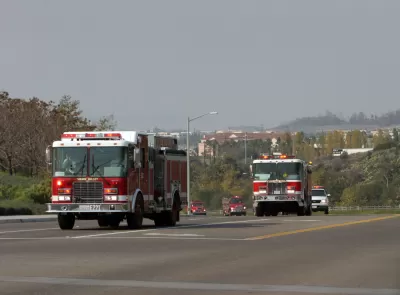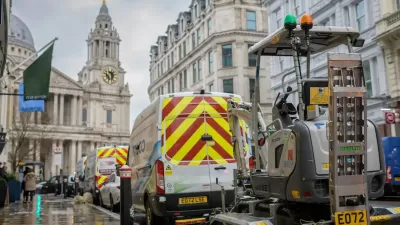The ear-piercing sirens used by emergency vehicles are shown to have little impact on patient outcomes while contributing to more dangerous road conditions, experts say.

Some experts are questioning the effectiveness of sirens and lights for emergency vehicles, noting that "[s]tudies have found that the time saved responding to medical calls by relying on lights, sirens and speed is not meaningful in most cases." As Christopher Mele reports, the overuse of sirens "can be a force multiplier for more harm than good."
Research has found that "[e]mergency drivers are more likely to engage in risky behavior when they use lights and sirens," while "other drivers sometimes respond in unpredictable ways," creating dangerous conditions that can lead to crashes. In fact, "an average of 4,500 such accidents occurred annually from 1992 to 2011, resulting in an average of 33 deaths and injuries to 2,600 people each year."
As far as their effectiveness at reaching patients, "the use of lights and sirens has been shown to have little bearing on patient outcomes," saving "an average of 42 seconds to three minutes off a trip to the scene of a call. According to Dr. Douglas F. Kupas, E.M.S. medical director for Geisinger E.M.S. in central Pennsylvania, "[m]ost of the things that are time-dependent are a very tiny minority of the E.M.S. calls." With consistent exposure to sirens, EMS workers "can suffer premature hearing loss," while patients "can be stressed by the noise."
FULL STORY: Sirens: Loud, Ineffective and Risky, Experts Say

Planetizen Federal Action Tracker
A weekly monitor of how Trump’s orders and actions are impacting planners and planning in America.

San Francisco's School District Spent $105M To Build Affordable Housing for Teachers — And That's Just the Beginning
SFUSD joins a growing list of school districts using their land holdings to address housing affordability challenges faced by their own employees.

The Tiny, Adorable $7,000 Car Turning Japan Onto EVs
The single seat Mibot charges from a regular plug as quickly as an iPad, and is about half the price of an average EV.

Seattle's Plan for Adopting Driverless Cars
Equity, safety, accessibility and affordability are front of mind as the city prepares for robotaxis and other autonomous vehicles.

As Trump Phases Out FEMA, Is It Time to Flee the Floodplains?
With less federal funding available for disaster relief efforts, the need to relocate at-risk communities is more urgent than ever.

With Protected Lanes, 460% More People Commute by Bike
For those needing more ammo, more data proving what we already knew is here.
Urban Design for Planners 1: Software Tools
This six-course series explores essential urban design concepts using open source software and equips planners with the tools they need to participate fully in the urban design process.
Planning for Universal Design
Learn the tools for implementing Universal Design in planning regulations.
Smith Gee Studio
City of Charlotte
City of Camden Redevelopment Agency
City of Astoria
Transportation Research & Education Center (TREC) at Portland State University
US High Speed Rail Association
City of Camden Redevelopment Agency
Municipality of Princeton (NJ)





























